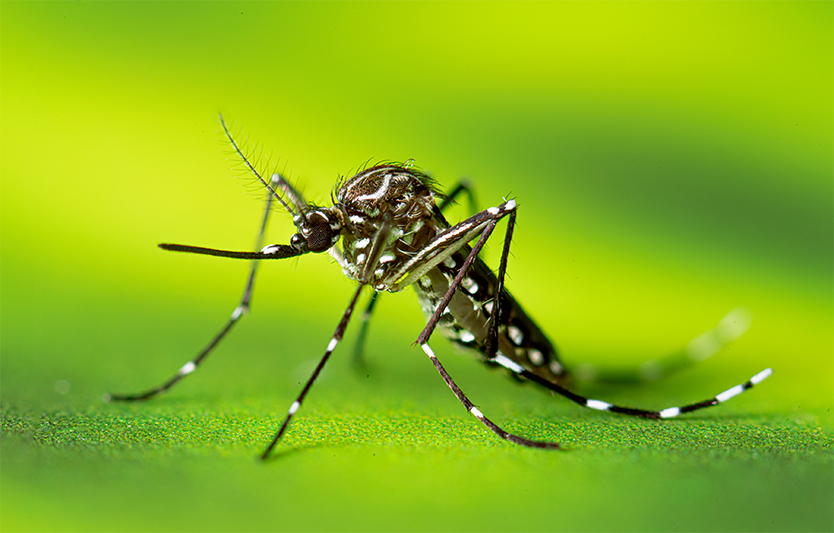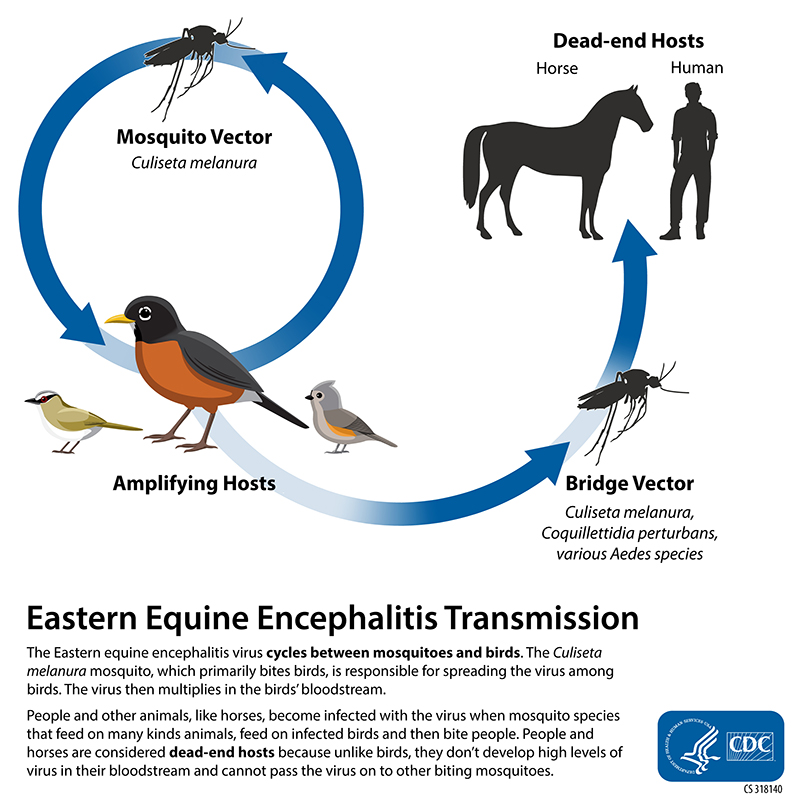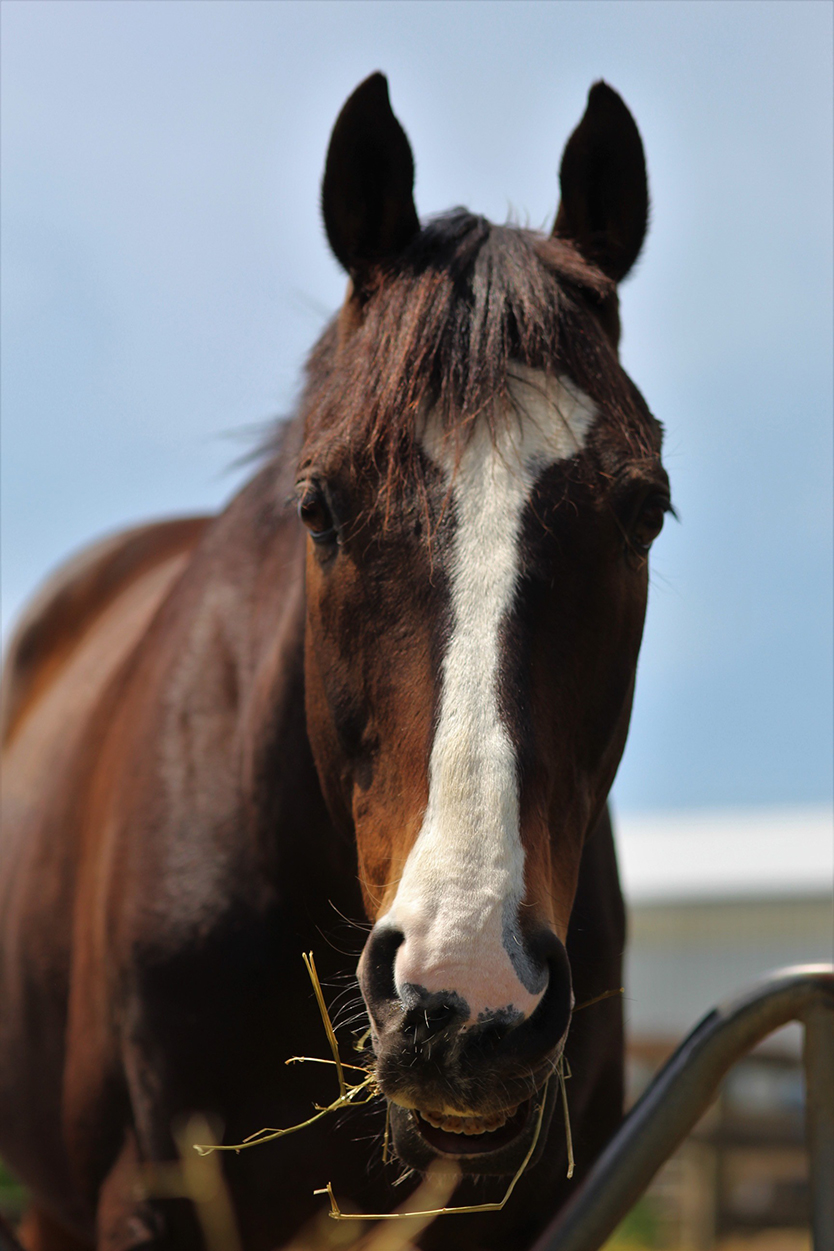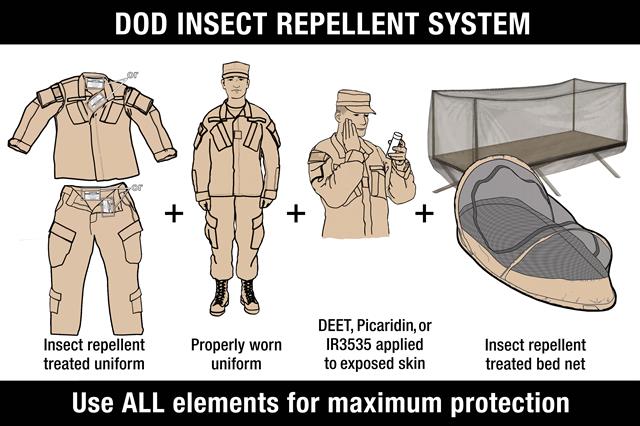Eastern Equine Encephalitis

|
Vector of EEE
Aedes agypti. Image from CDC.
|
How do people become infected with Eastern equine encephalitis?
People contract Eastern equine encephalitis (EEE) through the bite of infected mosquitoes.
Aedes,
Coquillettidia, and
Culex mosquitoes are responsible for transferring the virus from birds to people. After entering the body through a bite from an infected mosquito, the virus invades the central nervous system, including the spinal cord and brain. Epidemics in horses are common during the summer and fall, but EEE is a relatively rare disease in humans; approximately 5-10 cases of EEE are reported annually in the United States. Those who work in or around swamps or marshy areas can be exposed to bird-biting mosquitoes and are, therefore, at higher risk for contracting this disease. EEE is NOT transmitted from person-to-person. For example, you cannot get the virus from touching or kissing a person who has the disease or from a healthcare worker who has treated someone with EEE.
Can you get Eastern equine encephalitis directly from birds or other animals?
There is no evidence that a person can get EEE from handling either live or dead infected animals. However, as a general precaution, always wear gloves when handling dead animals, including dead birds, and use double plastic bags when disposing of them.
What are the symptoms of Eastern equine encephalitis, and how is it diagnosed?
Many people who are infected with EEE virus show no symptoms. In other people, symptoms range from mild flu-like illness (with fever, headache, and sore throat) to encephalitis (inflammation of the brain), coma, and death. Symptoms usually appear 4 to 10 days after the bite of an infected mosquito. Diagnosis can be confirmed by testing blood or spinal fluid. The disease is fatal in about 35% of people who develop severe symptoms. Survivors of the disease can suffer permanent brain damage and some require lifetime institutional care.

Is there a treatment for Eastern equine encephalitis?
There is no specific treatment for EEE, nor is there a human vaccine. However, a vaccine is available for horses. There is no specific medical treatment for EEE infection. Therapy is supportive only, directed at relieving the symptoms and preventing complications.
What should I do if I think I have Eastern equine encephalitis?
If you develop symptoms such as a sudden high fever, unusually severe headache, nausea, or vomiting, seek medical attention immediately. Individuals with suspected EEE illness should be evaluated by a healthcare provider.
How can Eastern equine encephalitis be prevented?
AVOID MOSQUITO BITES! Using the DOD Insect Repellent System is the best way to prevent mosquito bites. It incorporates permethrin repellent on the uniform; DEET, picaridin, or IR3535 repellent on exposed skin; a properly worn uniform with sleeves down; and sleeping under a permethrin-treated bed net. Another important preventive measure is to eliminate mosquito breeding sites. Search for and remove items that collect water such as plastic containers, flower pots, vases, childrens' toys, old tires, or any other items that can hold water. All standing water is potential mosquito breeding habitat.
Select the image for more information on the DoD Insect Repellent System.

